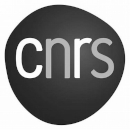At-risk individuals and presymptomatic diagnosis for late-onset neurodegenerative disease. Perspectives for the potential development of clinical trials
CADASIL is an adult-onset genetic neurodegenerative disease, associated with recurrent strokes (cerebral infarcts) susceptible to generate disabling cognitive and motor related disorders, especially after the age of 50. Although there is currently no cure, the prospect opened up by research into new therapies raises the issue of the participation of asymptomatic carriers of the genetic mutation in the planned clinical trials. Inclusion in the trials will likely presuppose that they accept presymptomatic diagnosis. Our focus is on this at-risk population, described in the literature as being in majority unwilling to know their genetic status. On the basis of findings from a questionnaire survey of people concerned by CADASIL (N=359), carried out as part of the TRT-cSDV project coordinated by the CERVCO, we discuss both what underlies at-risk people's choices to whether or not undergo genetic testing, and what might constitute, in the course of the experience of living with the risk of developing the disease, the tipping point leading people who initially were not interested in presymptomatic diagnosis to finally resort to it. We suggest that, far from being a straightforward and unambiguous journey, the decision process leading to the choices to keep ignoring their genetic status or be diagnosed has mainly to do with the desire to distance themselves from the disease to prevent it from taking over their life, but also with an entanglement between progression in age and the disease making its presence felt, and also their relationship to uncertainty, that bringing the prospect of therapy for CADASIL a step closer may possibly change.







